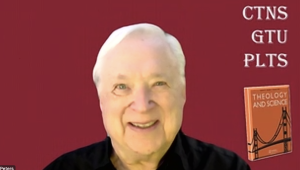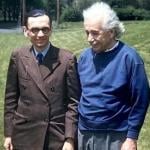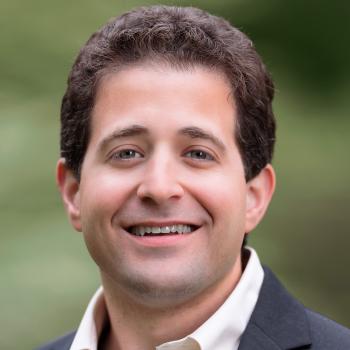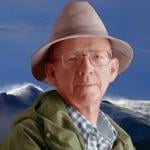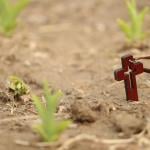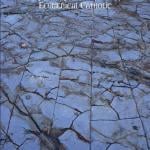
Who lives on K2-18b? New Space Neighbors? Should our churches invite these new space neighbors to next Sunday evening’s covered dish potluck?
Are new space neighbors only 124 light years away from Earth?
Like our family dog sniffing in the new neighbor’s back yard, the olfactory sensors aboard NASA’s James Webb Space Telescope (JWST) have caught the scent of dimethyl sulfide in the atmosphere of an exoplanet. That exoplanet’s address is EPIC 201912552b. It is the second planet orbiting a red dwarf sun, K2-18. It’s only 124 lightyears down the street.
Originally detected by Kepler, JWST is now providing more details. James Webb astrobiologists calculate K2-18b at 2.6 times the radius of Earth with a 33 day orbit within that star’s habitable zone.
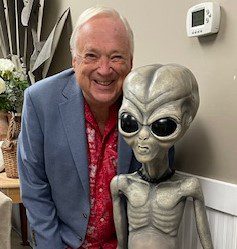
Might dimethyl sulfide (DMS; CH3SCH3) count as a biosignature indicating the presence of new space neighbors? Comprising one atom of sulfur bonded to two methyl groups, each of which contains one carbon atom and three hydrogen atoms, it’s a biosignature here on Earth. No doubt you’ve smelled this organosulfur once or twice. Dimethyl sulfide gives off that stinky odor reminding us of garlic or rotten eggs. This odor is emitted constantly by tiny plankton in our oceans. Can Webb’s spectroscopic nose accurately smell life on K2-18b?
Cambridge University’s Nikku Madhusudhan and colleagues believe K2-18b to be a hycean world—that is oceanic with a rich hydrogen atmosphere. Writing April 17, 2025, in Astrophysical Journal Letters, these scientists say this strongly suggests the “possibility of biological activity on K2-18b.”
New space neighbors? Not so fast! Scientific American commentator Meghan Bartels refers us to a 2024 study by Nathan Reed and colleagues on the “abiotic” production of organosulfur gases including dimethyl sulfide. “Although our results constrain the robustness of common organosulfur gases as biosignatures, the presence of these compounds may serve as an indicator of metabolic potential on exoplanets.” In short, dimethyl sulfide could be produced abiotically as well as biotically. This renders premature a judgment that JWST has proven the presence of life on K2-18b.
Astrobiology and Astrotheology
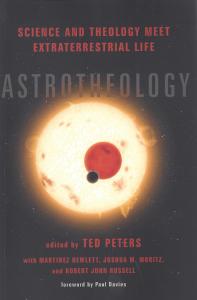
Like waving an ice cream cone in front of a four-year old’s widely opened eyes, astrobiologists constantly tantalize terrestrial imaginations with the prospect of extraterrestrial life. Giving free reign to our imaginations, we at the Center for Theology and the Natural Sciences in Berkeley have begun to develop a new discipline: Astrotheology.
“Astrotheology is that branch of theology which provides a critical analysis of the contemporary space sciences combined with an explication of classic doctrines such as creation and Christology for the purpose of constructing a comprehensive and meaningful understanding of our human situation within an astonishingly immense cosmos” (Peters, 2018, 11-12).
Currently, some of my colleagues – Carolina De La Fuente, Arvin Gouw, and Junghyung Kim — are working on a new anthology of articles written by experts in both astrobiology and astrotheology. I expect a publication date in early 2026.
Whiteheadian theologian Andrew M. Davis invites us to embrace an intergalactic religion. Rather than a set of dogmas, this religion is “an attitude or orientation toward the universe as allusive to the divine axianoetic reality behind it; that is, an ultimate reality of Mind and Value” (Davis 2022, 448).
We astrotheologians are getting ready. As soon as extraterrestrial neighbors pay us a call here on Earth, we will greet them with an invitation to join us for a potluck.
Conclusion
We in the churches should thank our scientist friends in astrobiology and related fields for providing us with new data and new learnings. The far horizon that beckons our imaginations is constantly receding and encompassing ever more possibilities. The magnificence of God’s creation only grows and grows.
Patheos SR 1200. K2-18b: New Space Neighbors?
Astrotheology’s contribution to public theology
Astrotheology as Public Theology
Do we have space neighbors in God’s kingdom?
Introducing astrotheology and astroethics
Does extraterrestrial life have intrinsic value?
Data from the PETERS ETI RELIGIOUS CRISIS Survey
Would confirmation of ETI cause a crisis for terrestrial religion? (Royal Society)
Would confirmation of ETI cause a crisis for terrestrial religion? (Patheos)
“After Contact” Interview with Nick Pope
▓
Ted Peters directs traffic at the intersection of science, religion, and ethics. Peters is an emeritus professor at the Graduate Theological Union, where he co-edits the journal, Theology and Science, with Robert John Russell on behalf of the Center for Theology and the Natural Sciences, in Berkeley, California, USA. He authored Playing God? Genetic Determinism and Human Freedom? (Routledge, 2nd ed., 2002) as well as Science, Theology, and Ethics (Ashgate 2003). Along with Martinez Hewlett, Joshua Moritz, and Robert John Russell, he co-edited, Astrotheology: Science and Theology Meet Extraterrestrial Intelligence (2018). Along with Octavio Chon Torres, Joseph Seckbach, and Russell Gordon, he co-edited, Astrobiology: Science, Ethics, and Public Policy (Scrivener 2021). Along with Arvin Gouw and Brian Patrick Green, he co-edited Religious Transhumanism and Its Critics (Lexington 2022). He is also author of UFOs: God’s Chariots? Spirituality, Ancient Aliens, and Religious Yearnings in the Age of Extraterrestrials (Career Press New Page Books, 2014). Look for his newest book, The Voice of Public Theology, a collection of previous articles. See his website: TedsTimelyTake.com.
▓
References
Davis, Andrew M. 2022. “Whiteheadian Cosmotheology: Platonic Entities, Divine Realities and Shared Extraterrestrial Values.” In Process Cosmology, by Maria-teresa Teixeira, and Wm Andrew Schwartz Andrew M Davis, 423-452. New York: Macmillan Palgrave.
Peters, Ted. 2018. “Introducing Astrotheology.” In Astrotheology: Science and Theology Meet Extraterrestrial Life, by Martinez Hewlett, Joshua M Moritz, and Robert John Russell, eds Ted Peters, 3-26. Eugene OR: Cascade Books.


